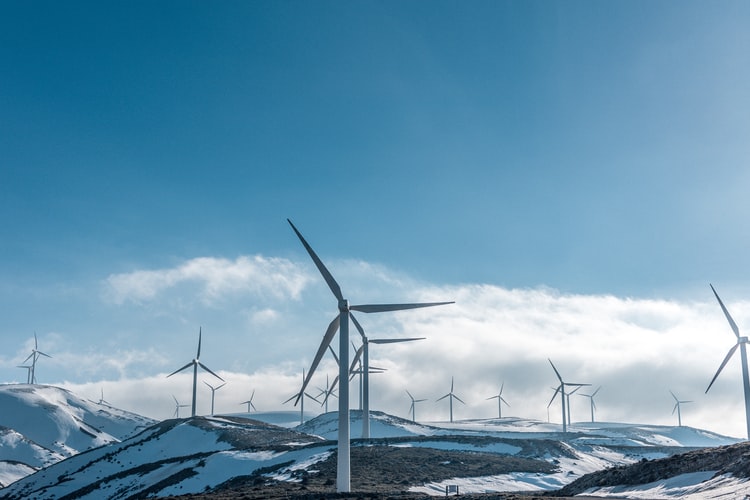Energy is a necessary component for the growth of India’s economy. It is also indirectly responsible for human development in the country. Energy is directly responsible for countries to grow towards middle or high-income economies. In the current energy scenario, approximately two-thirds of Indian households depend solely on traditional fuels for cooking. Even though all corners of the country are connected to the grid, the reliability remains doubtful. Due to this reliability in supply, power cuts are a common sight in villages for several hours a day.
One of the reasons causing this lag in human development is the reduced per capita energy use in India. According to the Economic Survey in 2018-19, the per capita energy in India should increase by at least four times to meet the needed economic and human development aspirations. Ensuring energy availability will not only help the betterment of human conditions but is also critical for industrial expansion. Access to energy is necessary to not only maintain existing infrastructure but also to expand outwards. Modernising aspects of the country, such as agriculture to help a significant portion towards better economic conditions also needs the availability of energy in India.
Energy and Human Development
It was hypothesised in the 1970s that a total of 33 gigajoules of per capita services would be more than enough to ensure basic human comfort. It could also enable a higher HDI in developing nations using new and efficient energy technologies. Currently, India’s per capita primary energy use is only 25 gigajoule. Dependable and affordable energy services are more important than per capita energy though. A constant and dependable supply of electricity is more important in enabling the full development of human potential. The per capita electricity use differs according to countries. There is a certain threshold however below which it becomes difficult to ensure a healthy standard of living. Most developed nations have around 7000 kWh per capita electricity use, whereas, middle-income countries have between a range of 2000 and 4000 kWh.
Energy and Education
Energy conservation is a two-part process. The process of conserving does not just involve changing to more sustainable forms of energy. There is also the necessity to efficiently manage energy from the process of generation to distribution. Energy management is a delicate process that requires skill and understanding in the innovative world of the energy industry. To ensure that there is a growing awareness in the country, MBA energy program must be encouraged throughout. There are many educational institutes nowadays that offer such courses and can prepare students and industry leaders to achieve efficient energy management in their industry. The education sector, in general, should also focus on teaching about energy management. This will create a sense of discipline regarding energy use in Indian households.
Optimal Energy Targets for India
For an optimal target, India does not have to have the same aim as of other countries. A realistic approach would be to aim for 1500 kWh by 2030. Gradually increasing 2500 kWh by 2020 is just as reasonable. This steady increase in capacity is to keep up with the expected increase in population, supply limitations, and environmental constraints for increased electricity production. If the production of electricity is increased as per the suggestions, India will see a growth in the quality of life and economic opportunities. Energy management must also be encouraged in different spheres of the energy and allied sectors in India through mba in renewable energy in india. Renewable energy may provide a great answer for energy conservation, but even that will require efficient management. This is necessary to sustain renewable energy as it is highly dependent on geographical location and weather conditions.
Role of Renewable Energy
There have also been recent developments in renewable energy production. With the persisting threat of natural calamities at India’s doorsteps, cleaner energy sources have been gradually replacing conventional fossil fuels based energy sources. Since renewable energy sources cannot be solely dependent on for electricity generation however, there should be synergetic management of energy involved. There are plans to construct more power projects by 2050 to prepare India for the optimal energy mix for electricity generation. That should also have to be enough time for India to reduce carbon emissions as part of the power generation process.
The dependence on mixing energy will ensure that India’s energy security and environmental sustainability is maintained. Currently, India depends on the import of coal, natural gasses and oil by 32%, 55% and 85% respectively. The solar power revolution was only prompted in India’s mission to be energy independent.
Read: 15 Ways To Save Energy Even With An Air Conditioning System
India currently has a total of 370 GW of installed electricity capacity. Coal plants make up 55% of that, while large hydro and renewable sources comprise 12% and 24% respectively. India’s dependence on gas and nuclear energy is lowest at 7% and 2% respectively. The share of actually generating power varies among the different sources, however. For India to reach per capita electricity use of 2,500 kWh by 2050, the energy generation will have to increase by two times than it is currently. Even though COVID-19 had reduced electricity demand initially, economic rebound will eventually bring back these challenges.
What Lies Ahead For India
Due to market regulations, and insufficient investment the expansion of new capacity additions have been slow. Energy conservation efforts and construction of energy projects should proceed in tandem to minimise the differences in various time lags. Alongside that, India should implement a greater share of variable generating resources using solar and wind energy. Since such an undertaking requires a huge investment in generation, transmission and distribution infrastructure. As such they should all work together steadily towards 2050.
Even though there are many barriers, a broad consensus wants to gradually wean off from the excessive dependence on fossil fuels. In recent years, India has also aggressively moved towards renewable energy to switch to less carbon-intensive energy. As far as dependence on nuclear power is concerned, it is an expensive and time-consuming option. Even so, nuclear energy use is only a backup solution in case of future uncertainties. India’s future in energy conservation and dependence on renewable energy is a great move for both environmental and economical reasons.










